CW81 June, 2023
A medical expert panel warned the public of the spread of coronavirus towards summer
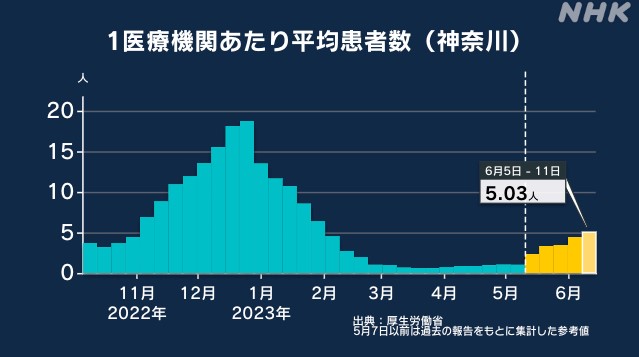
The health ministry’s panel warned in its June 16 (Fri) meeting that an increase in the number of daily cases had been continuing in 36 prefectures since April, and infection would surge towards summer. The numbers of inpatients and those in serious condition have also been rising in these prefectures. Some members’ opinion was that the ninth wave was about to begin. The average number of patients in hospitals in Kanagawa has been rising again since early May (see figure above).
In the meeting, it was reported that the new variant, Omicron XBB, had been replacing Omicron BA, and the panel decided that a new vaccine targeted at XBB.1 would be used for all the people aged five and older from September. Currently, vaccines for Omicron BA.1 or BA.4-5 are administered to people aged 65 and older, and medical workers. It has been found that the new vaccine, which is under development now, makes more neutralizing antibodies against the new variant than current vaccines.
Panel leader Shigeru Omi told Prime Minister Fumio Kishida on June 26 about the latest coronavirus situation, and said at the press conference after the talks that there was a possibility that the ninth wave had already begun, and stressed the importance of booster shots.
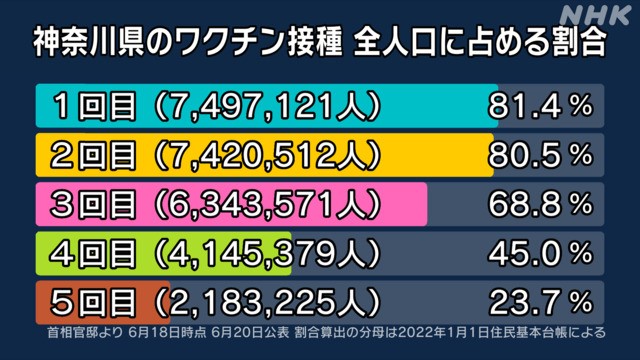
Vaccination rates in Kanagawa are in the table above. About 50% of the population received the second booster (the fourth vaccination). However, only 23.7% have received the third booster.
(Source) Average patients per hospital:
https://www3.nhk.or.jp/news/special/coronavirus/data/pref/kanagawa.html
Vaccination%: https://www3.nhk.or.jp/news/special/coronavirus/vaccine/pref/kanagawa/
Southern Beach will be opened on July 1 (Sat)

The swimming season will start on July 1 (Sat) and end on August 31 (Thu). Beach houses will do business from 8:30 to 17:00 on Monday to Thursday, and to 19:00 on Friday to Sunday as well as on National holidays. The city will try to make the beach friendly to disabled people by spreading barrier-free mats to the seashore, and lending out mobile chairs.
The opening ceremony will be held on July 1 (Sat) from 10:00. A Shinto ritual and other events are planned.
To attract more visitors from neighboring prefectures, campaigns will be held at the roadside shopping spot, Hanazono, in Saitama Pref. and JR Hachioji Station in western Tokyo.
In case of emergency, evacuate promptly to R134 (10 meters above sea level) by following the map: https://www.city.chigasaki.kanagawa.jp/_res/projects/default_project/_page_/001/044/288/1hinannmapu.pdf
Flowers of the Season: Common gardenia
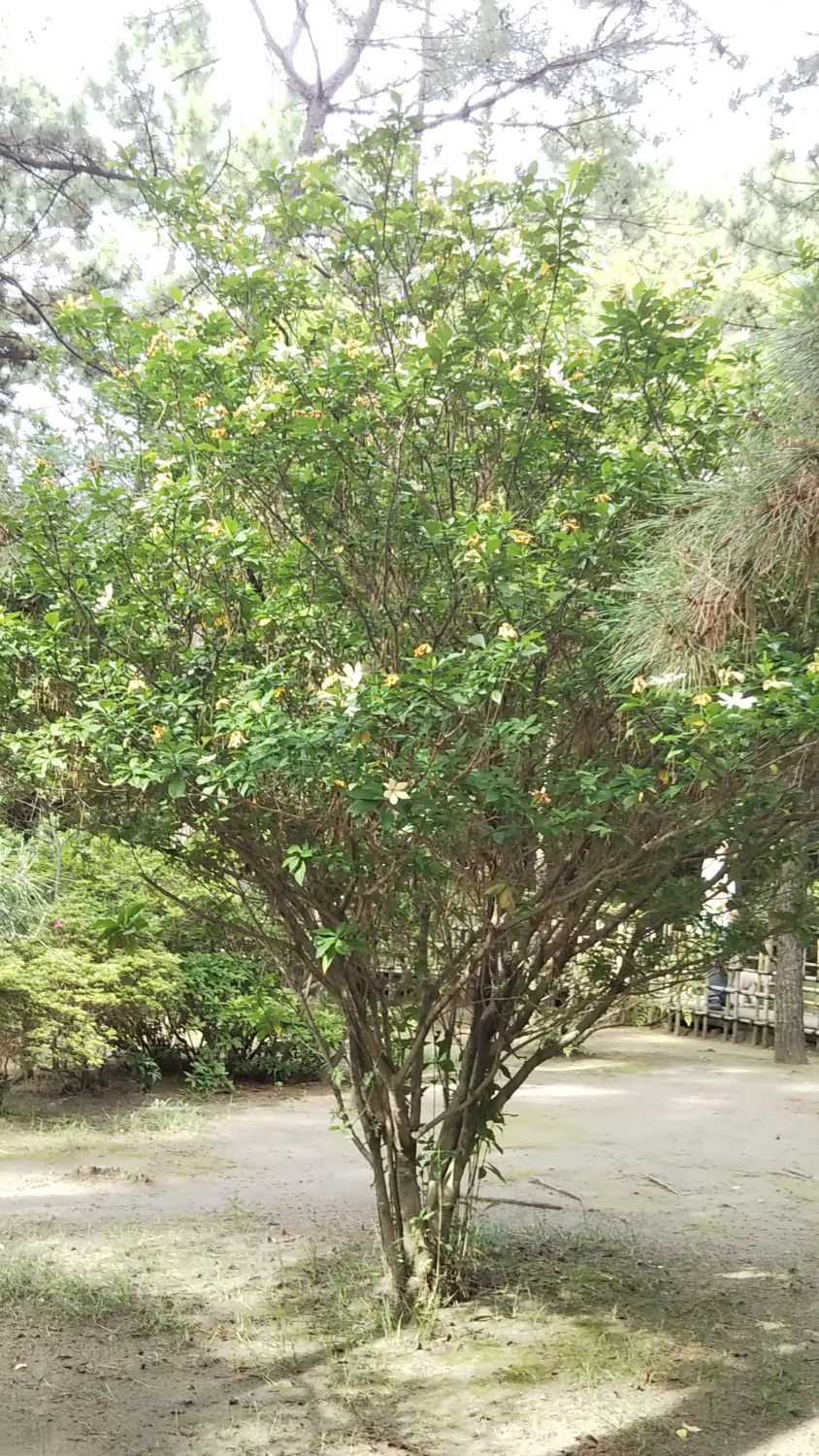
Common gardenia blooms white blossoms in the rainy season, called Tsuyu in Japanese, from June to July, emitting a strong aromatic fragrance that smells like Jasmine. So, its scientific name is Gardenia jasminoides. The wild evergreen bushy tree grows in China and Taiwan, and on the Korean and Indochina peninsulas. In Japan, the trees are seen in forests in Shizuoka Prefecture and further west, but are seen more often as a cultivated garden plant. The plant is fond of mild, moist climates and semi-shadowed areas. Cuttings are the most frequently used method for propagation of the plant, and the rainy season is suitable for the cloning.
The flowers of Common gardenia, having five to seven petals, are pure white in the beginning, and turn into yellow with the lapse of days. In autumn, they produce reddish yellow fleshy fruits whose shapes are normally two-centimeter ellipses. In addition, six sepals remain on the top and five to six prominent lines appear lengthways on the side surface.

Legs of Shogi and Go boards are in the shape of the fruit, implying that people around the board should stay out of the game, as the plant’s Japanese name Kuchinashi means ‘no mouth’.
The fruits contain carotene, geniposidic acid, flavonoids and essential oils. Dried fruits have been used as a yellow-coloring material since ancient times. In fact, it was found that clothes unearthed from an ancient tomb in Nara contained powder of the fruits. Today, to make one of the New Year’s dishes, sweet chestnut, the dried fruits are indispensable to dye them a beautiful yellow. In addition, geniposidic acid, which is yellow, becomes a blue pigment by a chemical reaction with amino acids in rice bran. The dried fruits are said to have anti-inflammatory, diuretic, and hemostatic effects, and decrease spasticity so that they are used in various kinds of Chinese herbal medicines.
A film screening by Cinematheque Chigasaki

The 53rd showing of the volunteer group, Cinematheque Chigasaki, took up a 1990 Iranian movie entitled ‘Close-up’. The screening was held in the afternoon on June 25 (Sun) at the Chigasaki City Library. The group has recently paid attention to great movies made in countries around the world other than Europe and the US.
The director, Abbs Kiarostami, took the ‘Close-up’ based on a real fraud, and he persuaded the real defendant and plaintiff of the incident to play their roles in his movie. The movie mixed the true story with dramatization. When Kiarostami learned about the fraud in the newspaper, he rapidly called a halt to the movie they had been shooting and took the camera crew to the court to record the trial of the case. The movie depicted feelings the arrested young man had in the back of his mind.
The accused confessed that only movies lifted him from everyday life which was full of disappointment. So, he had adored the film world. One day, he pretended to be a popular movie director to a woman in the seat next to him on a bus while they were talking. After that, he had to keep pretending to be the famous director and visited the woman’s bourgeois family for fake filming. It was a time for him to break a spell of his real life.

Words from the defendant, plaintiff, and judge impressed the audience. Finally, the judge asked the defendant, “What part would you like to play?” “MY own”, he replied.
Iranian movies have been under strict censorship since the Iranian Revolution in 1979, and almost all the imported movies, mainly US movies, have been banned from screening with the label “entertaining movies”. However, many classic films have been made by Iranian directors who have taken the international movie festivals by storm. They have refined filming techniques not only to express what they want to tell viewers, but to meet the Moslem religious principles.
In 2022, the film was ranked 17th among the 100 best films by the British Film Institute.
Interested in Japanese proverbs?
1)暑さ寒さも彼岸まで (ATSUSA SAMUSA MO HIGAN MADE)
ATSUSA means heat, SAMUSA cold, MO both, HIGAN the equinox, and MADE until.
Neither summer heat nor winter cold lasts after the equinox. After the autumnal equinox, the temperature gradually drops and autumn winds begin to blow. After the spring equinox, the temperature rises and cherry blossoms bloom. We can overcome a lot of hardships while we put up with them.
Speaking of the equinox, we can see the Diamond Fuji from the Shonan area.
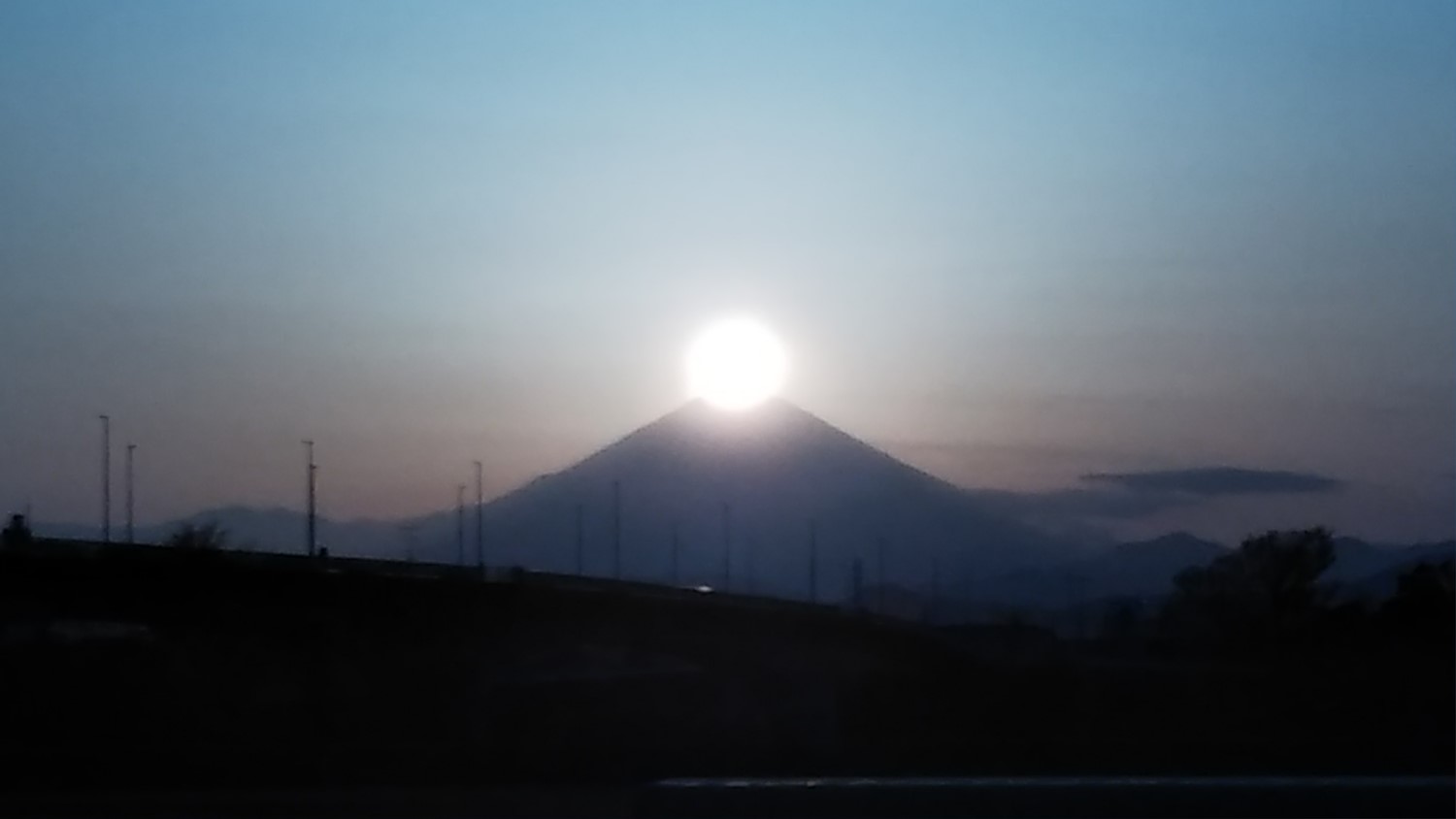
The saying is in 諺苑, or Gen-en, a Japanese dictionary in the Edo era. The collection of popular slang and proverbs with their sources and explanations was published in 1797. Its English equivalents are:
●No extreme hot or cold weather lasts after the equinox.
●Summer heat or winter cold lasts only until the equinox.
●The equinox brings on a mild season.
2)あの声で蜥蜴食らうか時鳥(ANO KOE DE TOKAGE KURAUKA HOTOTOGISU)
ANO means that, KOE beautiful calls, DE to twitter, TOKAGE lizards, KURAUKA to prey on, and HOTOTOGISU little cuckoos.
The call of beautiful cuckoos is lovely. People think them as elegant birds. But the birds often prey on lizards which look so weird that other birds would not eat them. As appearances can be deceiving, you cannot judge people by their looks.
Cuckoos lay their eggs in other birds’ nests, and let them raise their young birds because cuckoos cannot warm their eggs. Furthermore, the eggs of cuckoos hatch a few days earlier than other eggs in the nests, and baby cuckoos drop other eggs from the nests to get all the feed parent birds bring in. Cuckoos just act on instinct, but are terrible birds.
The haiku-style saying was composed by Kikaku Enomoto, a haiku poet of the Edo period, and is in 五元集拾遺, or Gogenshu-shui, a haiku collection published in 1747.Its English equivalents are:
●There are many fair things full of false.
●Things are seldom what they seem.
●You cannot judge a book by its cover.
History of Chigasaki: Murota Village (1)
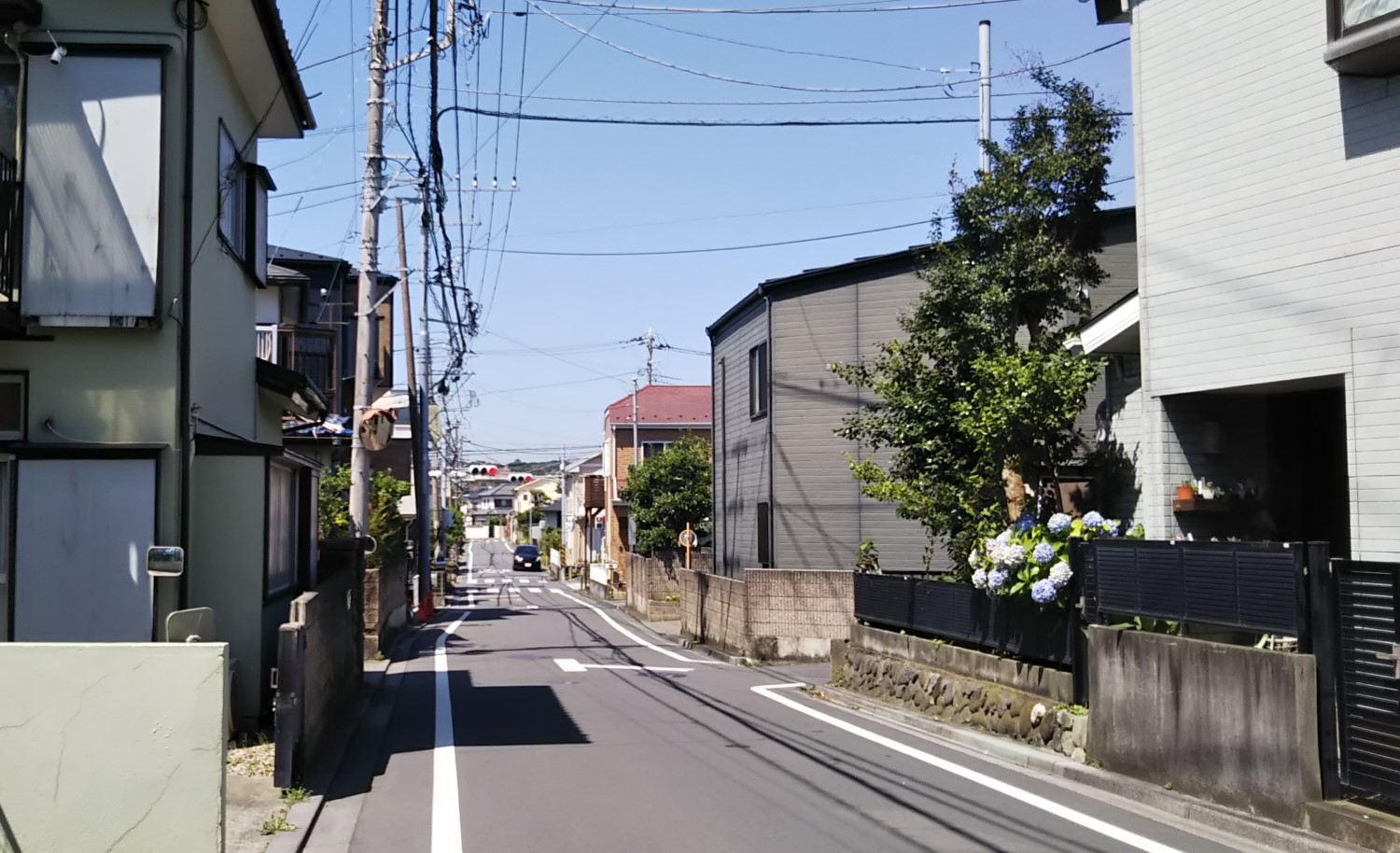
On a map of Murota Village supposedly made in the last days of the Tokugawa Shogunate (1603 ~1867), directions, farmland, waterways, streets, houses as well as shrines and temples are drawn so that the map shows readers clearly the village’s scenery in those days.
On the map, a thick red line shows a street connecting Oyama highway and Tokaido, later Route one. (See the photo above.) Even today, the line is the main street of the Murota district, and temples, houses and fields are drawn on either side of the line. Along the border between the Murota and Akabane districts, Oyama highway runs. The highway is written as “the pilgrimage route to Oyama”. Temples and Shrines on the map are Hachioji Gongen, Eishoji Temple (the Soto sect), Myokoji Temple (the Nichiren sect), San-no-Gongen and Amaterasu Ohmikami, but the last two have disappeared. Hachioji Gongen was the village shrine, Hachioji Shrine. 新編相模風土記稿 (the new edition of Sagami province topography) describes that San-no-gongen and Shinmei Gu (Amaterasu Ohmikami) were enshrined at Hachioji Sha, suggesting the two shrines were moved to the village shrine after the picture was drawn.

As for others, Sengen Sha is drawn in the east of the village, the memorial tower for dead peoples’ souls is on the east of Myokoji Temple, and the site of the bulletin board is on the north of Eishoji Temple. Sengen Sha is still worshiped, and small stone shrine stands on the site.
Two blue lines show waterways. One is the Sen no River, and the other is the Nakagawa trench, the two of which are described in 皇国地誌 (the topography by the Meiji government). The topography says the trench came from Hishinuma Village, and entered in Murota Village through the To-no-machi section. The 1.2-meter-wide stream went west about 630 meters through the central part of the village, and entered Takata Village from the Onawashita section. Today, water flows most of the course through an underground drain.
Rice fields spread over lowlands in the southern area of the village, and part of the fields is called Goryo Shinden. Shinden means newly cultivated rice fields. The topography says there is Motizoe Shinden, which was cultivated in 1745, and possessed by the Tokugawa Shogunate. This shows the shinden was under the direct control of the shogunate, though the lord of Murota Village in the Edo period was the Takuma family.
Short Essays on Chigasaki-3 Kamakura-Gengoro-Taira-Kagemasaand Ohba-no-Mikuriya (In Ancient times)
(Bimonthly serial)
Ohba-no-Mikuriya (大庭御厨) was a private land of Taira Kagemasa (平景正), a powerful family clan in the 12th century. He developed a wasteland he had inherited from his ancestors, and contributed it to the Ise Jingu Shrine in 1116 to have the benefit of divine virtues. The border of the land in the east was the Matano River (the Sakai and Katase Rivers at present) adjacent to Kamakura, Shingo (near Samukawa Shrine) in the west, the ocean in the south and Ohmakizaki (the northern area of Fujisawa) in the north. It was expanded to cover Chigasaki, Fujisawa, and Samukawa, reaching around 100 ha in 1145.
A mikuria functioned as the kitchen of a Shinto shrine, providing sacred offerings and meals for a deity. Shinto priests were in charge of the management, and land developers were assigned to control a local area. The Ohba family clan, the offspring of Kagemasa, became official servants to maintain the Ohba-no-Mikuriya.
The background was that Ise Jingu Shrine had shouldered the heavy burden of operating the Shikinen-sengu (式年遷宮), a religious Shinto event*1. However, the cost of the event became larger in the 11th century. Thus, preaching divine power of god, the shrine asked family clans in Kanto areas to contribute lands they had developed.

The brothers of Ohba Kageyoshi and Kagechika (the photo above, performed by Jun Kunimura in “The 13 Lords of the Shogun”) were grandsons of Kagemasa, and Kajiwara Kagetoki belonged to the same clan*2.
(The source of the essay: Chigasaki People’s Book published by Chigasaki City)
*1 The event is held every 20 years, over the course of 1,300 years through constructing a new shrine and transferring the enshrined object from the old to the new. It is very meaningful to keep religious rituals to preserve Ise Jingu Shrine forever.
*2 They were samurai warriors who contributed to establishing the first government by a samurai warrior, Minamoto-no-Yoritomo, in the Kamakura era (1185-1333).
Photo below: Shinmei Shrine was built by Kageyoshi Ohba so that his residence did not face the demon’s gate.

Events in June
Bonsai Exhibition
The 38th Bonsai exhibition was held at the Civic Hall from June 2 (Fri) to the 4th (Sun). Around 50 pots were exhibited. Many of the trees took more than five years to grow, and some took over ten years.
Members of Bonyu Kai (Bonsai lover club) explained how to raise and shape plants like the photo below to visitors.

Firstly, in a flower pot, a sapling is planted which has been grown from a cutting.
Secondly, a rock is stuck into the pot at a slant, and the sapling is fixed along the rock with a wire and wrapped in a plastic sheet.
Thirdly, a one-centimeter-thick soil layer is inserted between the sapling and the sheet, and then, the plastic sheet is coiled with a wire. One year later, the sheet is peeled off around the trunk by one centimeter from the top. Every year the same measure is repeated.
Finally, the plastic sheet and the wire are completely removed. During the process, the plant should be watered every day. In addition, pruning and fertilization is necessary.

The club holds a free workshop at the community centers of the Chigasaki or the Koide districts on the second Sunday of every month from 14:00 to 16:00. Beginners are welcome.
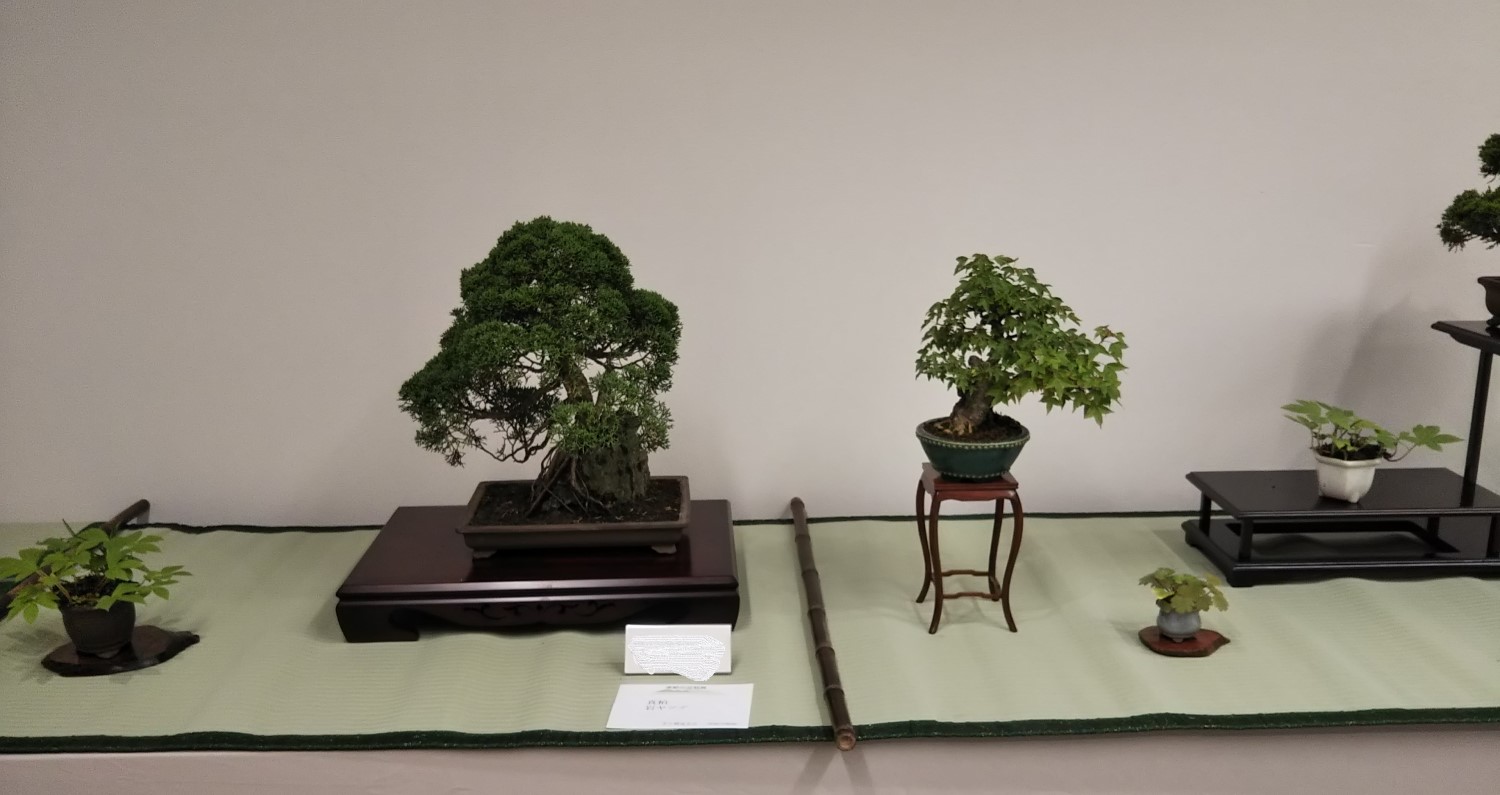
Picture postcards of flowers
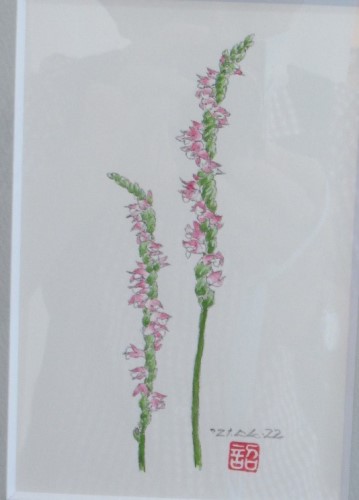
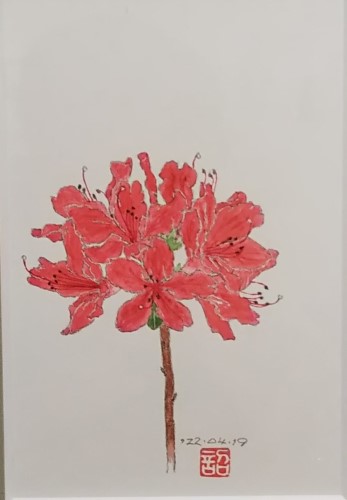
(Left: Nejibana, Right: Satsuki)
The 4th exhibition of picture postcards of flowers took place at Citizen Gallery from May 30 (Tue) to June 4 (Sun). When he was 68, watercolor painter Shyogo Kawasaki began to draw flowers on the postcards he sent to his mother, who lived at a distant place. He always added the language of the flowers beside the pictures. He says, just as drawing paper, he likes postcards because of their color; subtly yellowish white. Usually, he sketches flowers on the spot with a 3B pencil. Then, he paints it with watercolors, leaving the lines of sketches visible.
These postcards looked like they smiled silently at visitors. He held his first exhibition when the number of such postcards reached 1,000 sheets. Now, he has about 1,400 sheets, and around 60 of them were displayed.
The exhibition of Ryuan Toma’s household goods entitled “Living in Yanagishima of the late Edo period” at Chigasaki City Museum
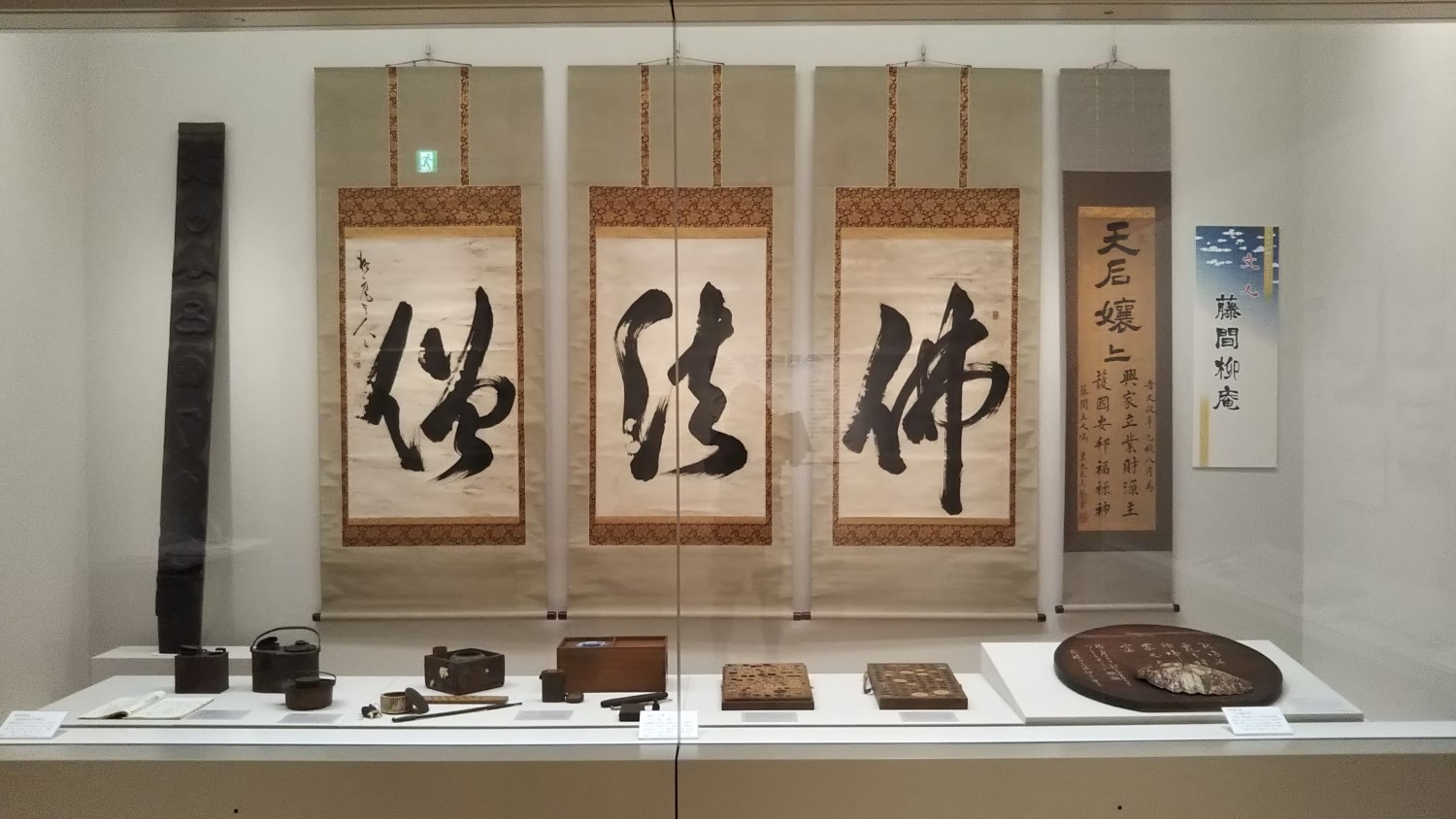
The exhibition is taking place to commemorate the 140th anniversary of Ryuan Toma’s death. Toma (1801-1883) was born into a family which produced the village head and ran a shipping business for generations. He was chosen as one of the “100 People representing Kanagawa” in 1980. On display are (1) utensils and small household goods which had been handed down from his ancestors, (2) his writing, drawing tools and pipes, (3) hanging scrolls of transport ships and Chinese characters, and (4) other precious things. The exhibition is going to be held until July 9 (Sun).
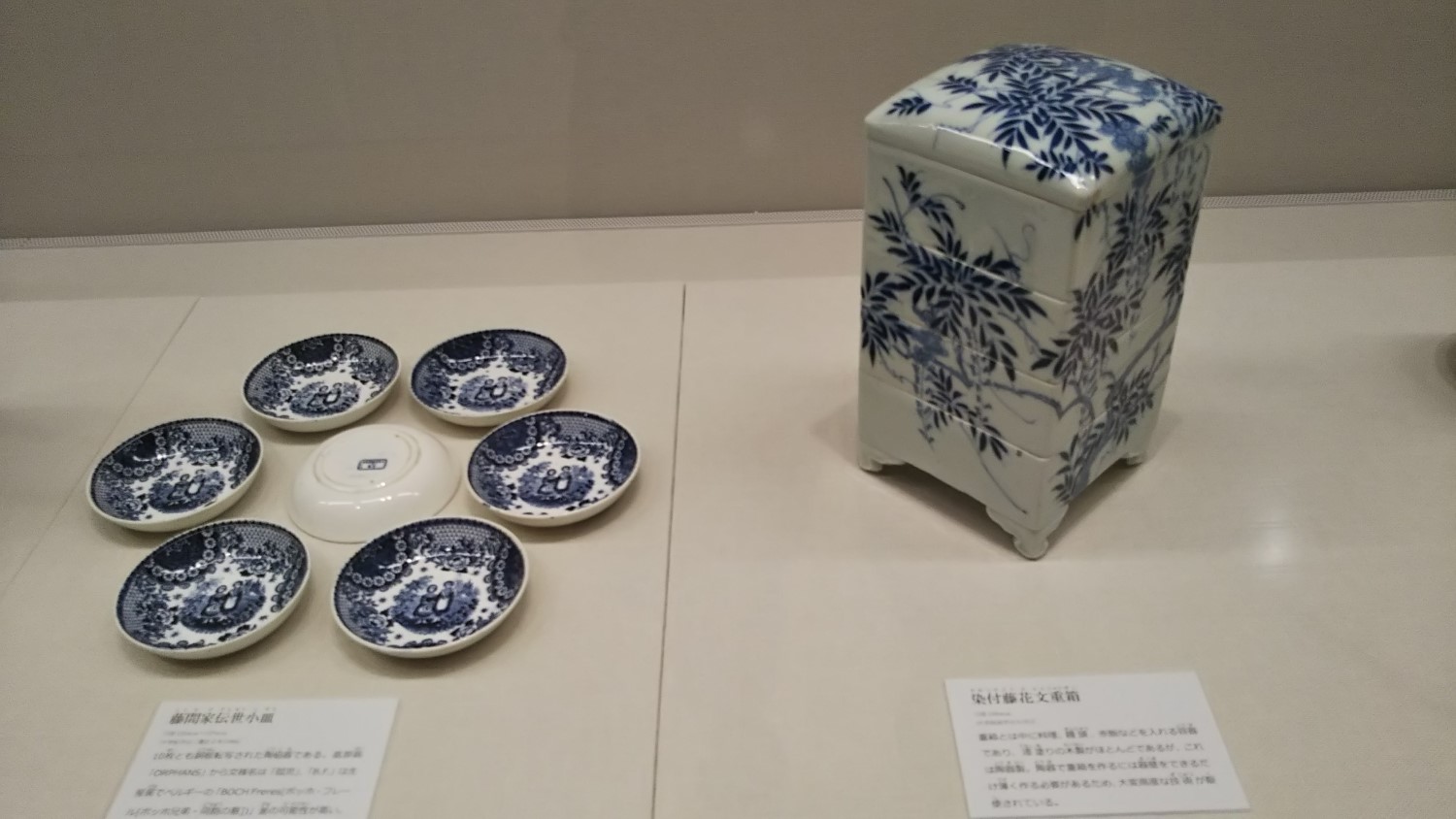
The photo below shows a porcelain distillation set. It consists of three parts: the top is a condenser, and the bottom is a vessel for a liquid to be distilled. There are no signs that the set was used.
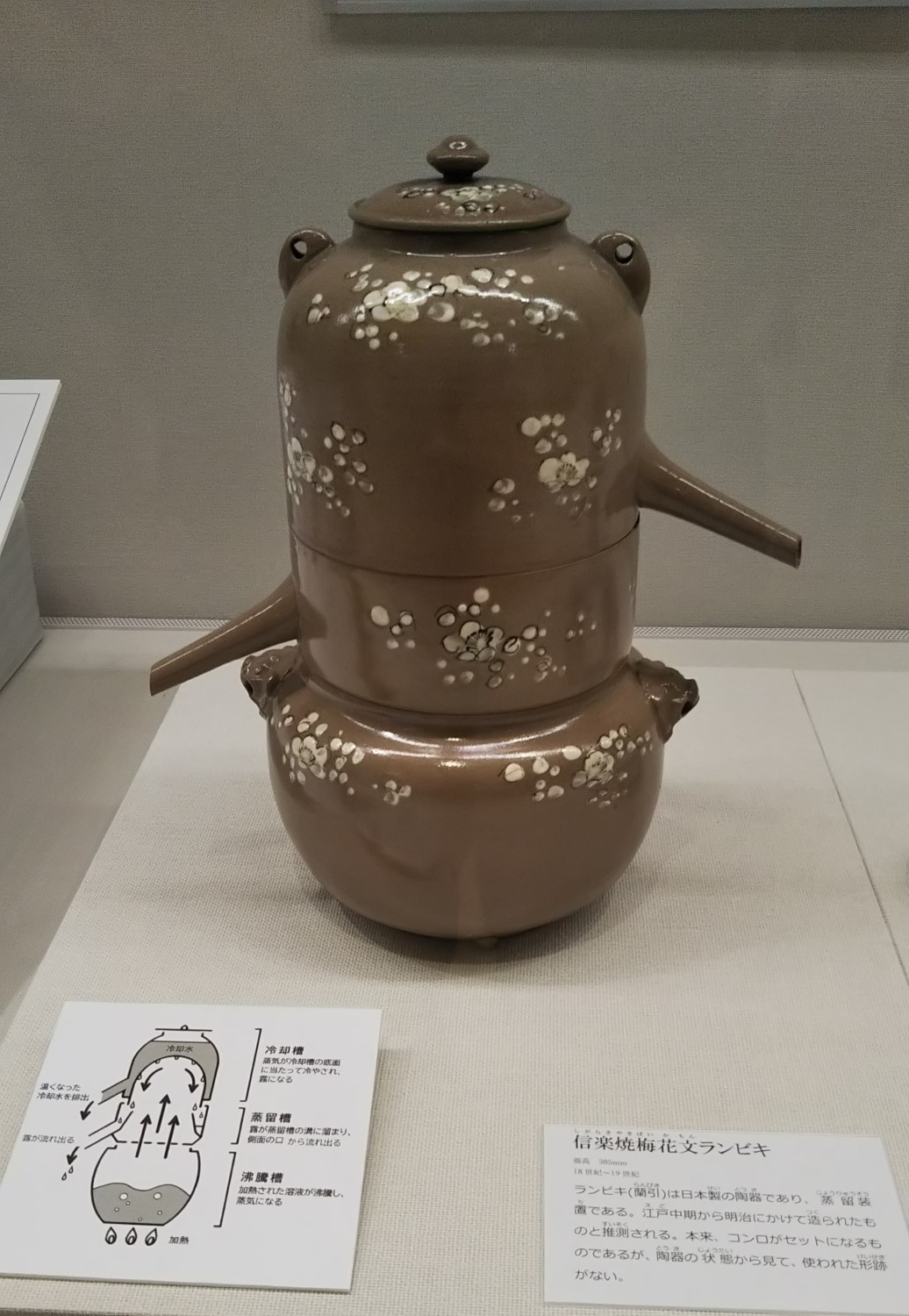
The residence of the Toma family is located in the Yanagishima district, where low land spreads, and its surface layer consists of earth and sand carried by the Sagami and Koide Rivers. The house is designated as one of the city’s historic sites. There are a variety of plants and grass in the yard.
Art exhibition “Pictures of Forests and the Sea” by BEE ART SCHOOL

BEE ART SCHOOL held its exhibition at Citizen Gallery on June 24 (Sat) and the 25th (Sun). It was the first time the 10-year-old art school had exhibited. At the school, from preschoolers to high school students learn drawing once or twice a month at the school’s studio in Tsutsumi or at Umikaze Terrace, near the ball park.
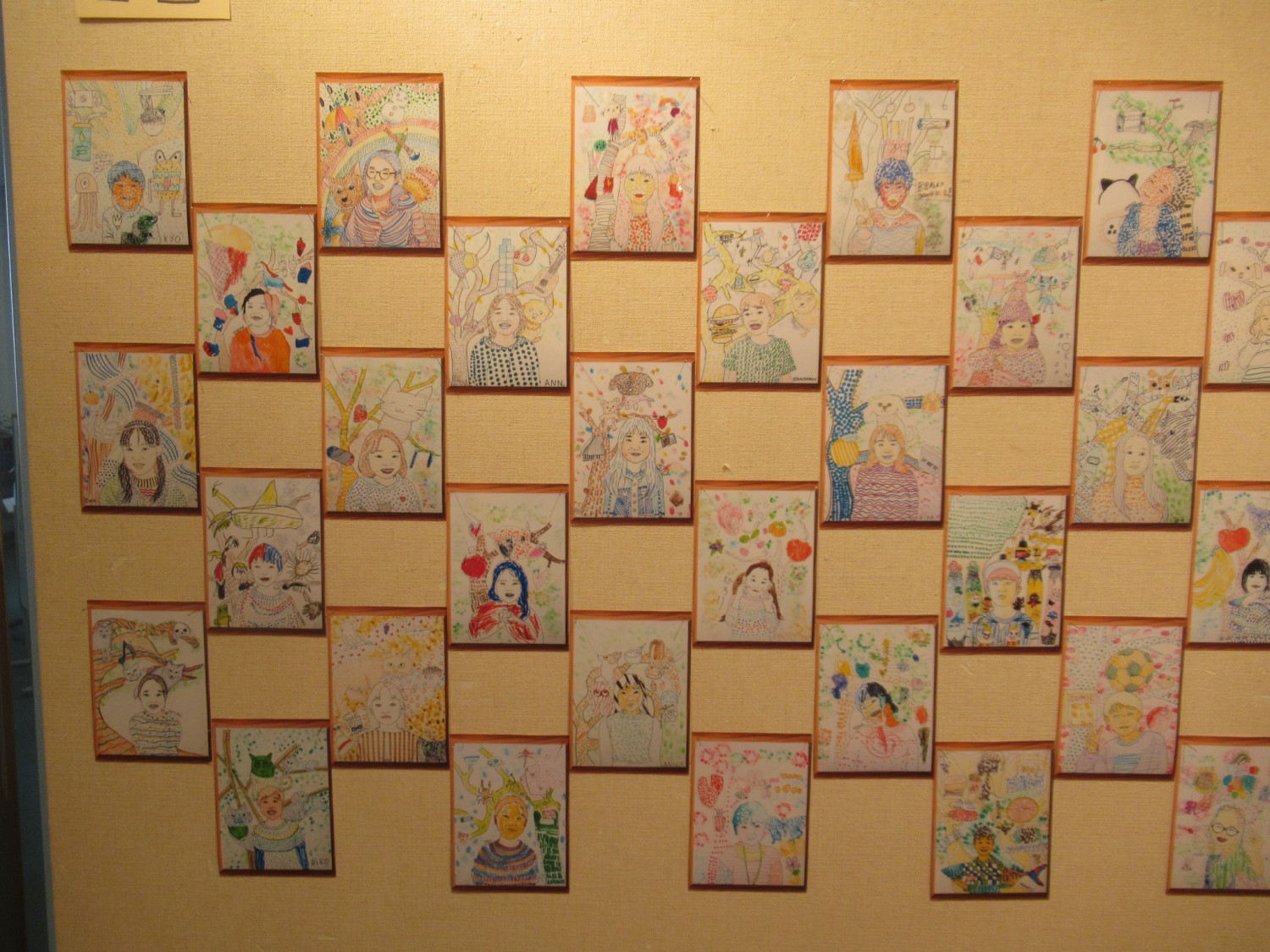
For the exhibition, preschoolers and school children painted pictures based on their images of the same given themes. Junior high and high school students chose themes themselves. Headteacher Yumiko Yahata says she wants her students to discover what they like and to pursue their dreams. As she hopes, their artworks were highly creative.
About the school, go to https://beeartschool.mystrikingly.com/
British Landscape and Doppo Kunikida
The exhibition of landscapes in Britain of the 18th century is now underway at the Chigasaki City Museum of Art. About 60 works were painted by British artists and 30 by Japanese artists. Many of the works by Japanese artists were drawn around the late 19th and early 20th centuries, about 100 years later than those by British artists.

British landscapes were drawn by various techniques, including oil paint, watercolor paint, and pencils as well as copperplate printing such as etching, mezzotint, lithograph and engraving, while most Japanese painters used watercolor paint. This probably reflects the difference in the development stage of drawing technology between the two countries.

Unlike modern landscapes many works by British artists impress viewers with a profound atmosphere. The dark tone is similar to that of religious paintings and portraits.
Doppo Kunikida (1871-1908) was hospitalized in Nanko-in. He was deeply affected by British poet William Wordsworth (1770-1850). He composed poems about the Lake District, and Doppo described the beauty of his beloved Musashino (today’s Kawagoe to Fuchu). British Artists and Wordsworth lived in the same period. – So did Doppo and Japanese artists. The exhibition also tells visitors how Japanese artists in those days painted nature, and how Doppo thought about nature.
Admission fee (yen): Adult 1,000, Uni. student 800, Citizen aged 65 and older 500, High school student and younger, handicapped person and their caretaker free.
The exhibition is going to be held until August 27 (Sun).
Events in July
Citizen Gallery on the 4th floor of N’EST-CE PAS Chigasaki
●The 23rd calligraphy exhibition by Chigasaki city calligraphy association: July 6 (Thu) 13:00 ~ 18:00, the 7th (Fri) and the 8th (Sat) 10:00 ~ 18:00, the 9th (Sun) 10:00 ~ 17:00
●Kamakurabori exhibition (handicraft exhibition) by Kamakurabori koenkai: July 12 (Wed) to the 15th (Sat)10:00 ~ 16:30, the 16th (Sun) 10:00 ~ 14:30
●Photo exhibition “Living creatures in the Shonan area” by Hiroshi Naekawa: August 4 (Fri) 13:00 ~ 16:00, the 5th (Sat) 10:00 ~ 17:00, the 6th (Sun) 10:00 ~ 16:00
Hamaori Festival
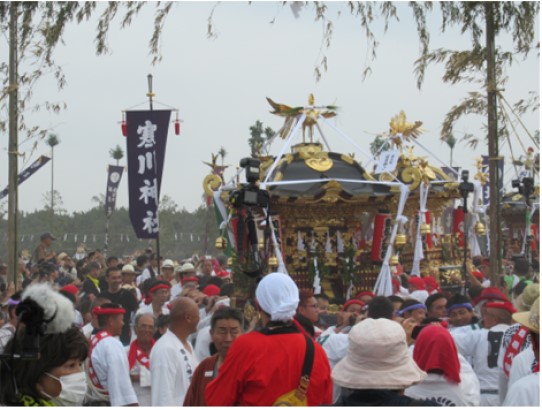
One of the city’s major festivals, Hamaori Festival, is going to be held on the early morning of the third Monday in July, Marine Day (July 17), for the first time in four years. About 40 mikoshi will gather on the Nishihama Beach early in the morning. Shinto ritual will be held from 7:00 to 8:00. One of the intangible cultural assets of Kanagawa will finally be resurrected.